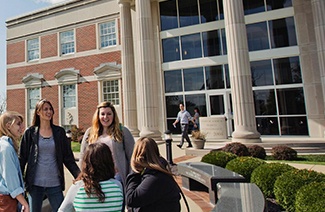下面新东方网雅思频道为大家整理了雅思阅读实战训练模拟试题(二),供考生们参考,以下是详细内容。
★ Rogue theory of smell gets a boost
Published online: 6 December 2006
Rogue theory of smell gets a boost
1.A controversial theory of how we smell,which claims that our fine sense of odour depends on quantum mechanics,has been given the thumbs up by a team of physicists.
2.Calculations by researchers at University College London (UCL) show that the idea that we smell odour molecules by sensing their molecular vibrations makes sense in terms of the physics involved.
3.That's still some way from proving that the theory,proposed in the mid-1990s by biophysicist Luca Turin,is correct.But it should make other scientists take the idea more seriously.
4."This is a big step forward," says Turin,who has now set up his own perfume company Flexitral in Virginia.He says that since he published his theory,"it has been ignored rather than criticized."
5.Most scientists have assumed that our sense of smell depends on receptors in the nose detecting the shape of incoming molecules,which triggers a signal to the brain.This molecular 'lock and key' process is thought to lie behind a wide range of the body's detection systems: it is how some parts of the immune system recognise invaders,for example,and how the tongue recognizes some tastes.
6.But Turin argued that smell doesn't seem to fit this picture very well.Molecules that look almost identical can smell very different — such as alcohols,which smell like spirits,and thiols,which smell like rotten eggs.And molecules with very different structures can smell similar.Most strikingly,some molecules can smell different — to animals,if not necessarily to humans — simply because they contain different isotopes (atoms that are chemically identical but have a different mass).
7.Turin's explanation for these smelly facts invokes the idea that the smell signal in olfactory receptor proteins is triggered not by an odour molecule's shape,but by its vibrations,which can enourage an electron to jump between two parts of the receptor in a quantum-mechanical process called tunnelling.This electron movement could initiate the smell signal being sent to the brain.
8.This would explain why isotopes can smell different: their vibration frequencies are changed if the atoms are heavier.Turin's mechanism,says Marshall Stoneham of the UCL team,is more like swipe-card identification than a key fitting a lock.
9.Vibration-assisted electron tunnelling can undoubtedly occur — it is used in an experimental technique for measuring molecular vibrations."The question is whether this is possible in the nose," says Stoneham's colleague,Andrew Horsfield.
10.Stoneham says that when he first heard about Turin's idea,while Turin was himself based at UCL,"I didn't believe it".But,he adds,"because it was an interesting idea,I thought I should prove it couldn't work.I did some simple calculations,and only then began to feel Luca could be right." Now Stoneham and his co-workers have done the job more thoroughly,in a paper soon to be published in Physical Review Letters.
11.The UCL team calculated the rates of electron hopping in a nose receptor that has an odorant molecule bound to it.This rate depends on various properties of the biomolecular system that are not known,but the researchers could estimate these parameters based on typical values for molecules of this sort.
12.The key issue is whether the hopping rate with the odorant in place is significantly greater than that without it.The calculations show that it is — which means that odour identification in this way seems theoretically possible.
13.But Horsfield stresses that that's different from a proof of Turin's idea."So far things look plausible,but we need proper experimental verification.We're beginning to think about what experiments could be performed."
14.Meanwhile,Turin is pressing ahead with his hypothesis."At Flexitral we have been designing odorants exclusively on the basis of their computed vibrations," he says."Our success rate at odorant discovery is two orders of magnitude better than the competition." At the very least,he is putting his money where his nose is.
(668 words Nature)
Questions 1-4
Do the following statements agree with the information given in the passage? Please write
TRUE if the statement agrees with the writer
FALSE if the statement does not agree with the writer
NOT GIVEN if there is no information about this in the passage
1.The result of the study at UCL agrees with Turin’s theory.
2.The study at UCL could conclusively prove what Luca Turin has hypothesized.
3.Turin left his post at UCL and started his own business because his theory was ignored.
4.The molecules of alcohols and those of thiols look alike.
Questions 5-9
Complete the sentences below with words from the passage. Use NO MORE THAN THREE WORDS for each answer.
5.The hypothesis that we smell by sensing the molecular vibration was made by ______.
6.Turin’s company is based in ______.
7.Most scientists believed that our nose works in the same way as our ______.
8.Different isotopes can smell different when ______ weigh differently.
9.According to Audrew Horsfield, it is still to be proved that ______ could really occur in human nose.
Question 10-12
Answer the questions below using NO MORE THAN THREE WORDS from the passage for each answer.
10.What's the name of the researcher who collaborated with Stoneham?
11.What is the next step of the UCL team's study?
12.What is the theoretical basis in designing odorants in Turin's company?

















